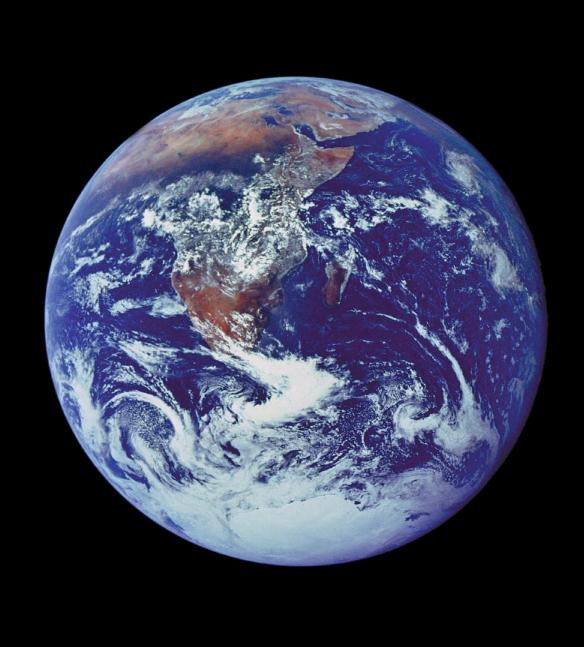Earth
Basic Earth
Facts
• Third planet from the Sun
• It’s a Terrestrial Planet and HOME!
Diameter: 7,926 miles
Mass: 1 Earth mass
Density: 5.52 where water = 1
Gravity: 32.2 feet/sec2
Albedo (% of Sunlight reflected): 37%
Rotation on Axis: 23 hours, 56 min, 4.1 sec
Inclination of Axis to Orbit: 23.4°
Average Distance from Sun: 92,955,800 miles
Revolution about Sun: 365.26 days
I
nclination of Sun to Earth’s Orbit: 7.2°
Atmosphere: 77% Nitrogen, 21% Oxygen, 1% water, 0.9% Argon, plus traces of other gases
Surface Temperature: Averages 59° F
Atmosphere Pressure: 14.7 lb/inch2
Moon: Only one.

This is a very famous photo from the last Apollo 17 mission
that went to the Moon in 1972.
It is still used today in all types of media.